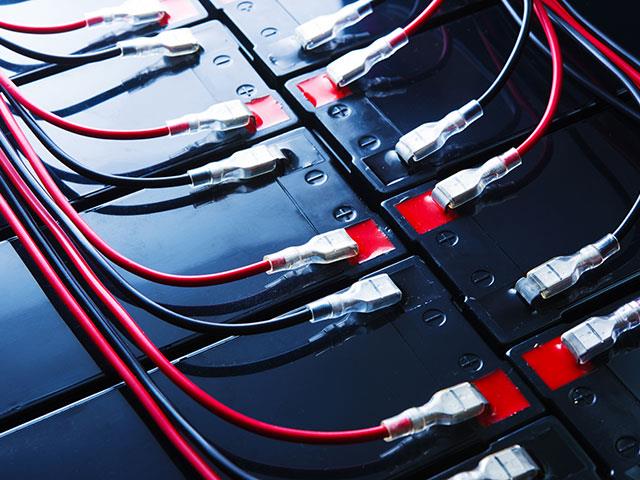Power Up: The Ultimate Guide to UPS Batteries and Their Lifespan
Power Up: The Ultimate Guide to UPS Batteries and Their Lifespan
Blog Article
In today's world, where technology and power reliability are more critical than ever, understanding the role of UPS batteries has become essential for both businesses and homeowners. A Uninterruptible Power Supply, or UPS, serves as a safeguard against unexpected power outages, ensuring that your devices remain operational during such events. However, the heart of any UPS system lies in its batteries, which provide the backup power needed when the grid fails.
Proper care and knowledge of UPS batteries can significantly impact their lifespan and performance. Many users may overlook this aspect, but being informed about how these batteries work, their maintenance needs, and the signs that indicate they require replacement can save you from costly downtimes and potential data loss. In this guide, we will delve into the essentials of UPS batteries, equipping you with the information you need to maximize their durability and efficiency.
Types of UPS Batteries
There are several types of UPS batteries, each suited for different applications and environments. The most common types are sealed lead-acid (SLA) batteries, lithium-ion batteries, and nickel-cadmium (NiCd) batteries. SLA batteries are widely used due to their cost-effectiveness and reliability. They are maintenance-free and can be used in various situations, making them a popular choice for smaller UPS systems.
UPS Uninterrupted Power Supply
Lithium-ion batteries have gained popularity in recent years due to their higher energy density and longer lifespan compared to lead-acid batteries. They offer faster charging times and greater efficiency, making them suitable for modern UPS systems that require reliable power for sensitive equipment. Although they can be more expensive upfront, their longer lifecycle and reduced maintenance needs often result in lower total ownership costs.
Nickel-cadmium batteries are known for their robustness and ability to perform well in extreme temperatures. They are less common in consumer applications but are still used in industrial settings and critical systems that require reliable power. While they have a longer lifespan, their environmental impact concerns and the need for maintenance may limit their attractiveness in comparison to newer technologies like lithium-ion. Each type of UPS battery has its advantages and trade-offs, making it essential to choose the right one based on specific requirements.
Factors Affecting Lifespan
The lifespan of UPS batteries is influenced by various factors including temperature, usage patterns, and maintenance practices. Higher temperatures can accelerate the chemical reactions within the battery, leading to quicker degradation. Ideally, UPS batteries should be stored and operated in a controlled environment where the temperature is kept within the recommended range. Regularly checking the ambient temperature can help in managing the conditions that affect battery performance and longevity.
Another significant factor is how often the UPS battery is cycled. Frequent discharging and recharging can wear out the battery faster than occasional use. It is important to understand the charging cycles that your battery can handle and to avoid deep discharges whenever possible. By optimizing usage patterns and ensuring the battery is not overworked, you can extend its operational life.
Regular maintenance is essential for maximizing the lifespan of UPS batteries. This includes periodic inspections, cleaning of terminals, and testing the battery's health. Keeping terminals clean helps prevent corrosion, which can impede performance. Following the manufacturer's guidelines for maintenance schedules can also provide insights into when a battery replacement is necessary, ensuring reliability and efficiency in power backup solutions.
Maintenance Tips for Longevity
Regular maintenance is crucial for extending the lifespan of UPS batteries. Start by ensuring that your UPS unit is kept in a clean, dry environment. Dust and moisture can significantly impact battery performance and health. It is important to check the physical condition of the batteries periodically. Look for any signs of swelling, corrosion, or leakage, as these can signal potential problems that need immediate attention.
Another key aspect of maintenance is keeping the batteries charged. Lithium-ion and sealed lead-acid batteries have different charging requirements, but both types benefit from being kept at an optimal charge level. Avoid allowing them to completely discharge, as this can shorten their lifespan. Schedule routine tests and inspections, and consider using a UPS monitoring system that alerts you when the batteries are not functioning correctly or require replacement.
Lastly, ensure that you have an effective cooling system in place. Excessive heat can degrade battery health and shorten their longevity. Place your UPS in a well-ventilated area, away from heat sources. Keeping the units cool will help maintain the batteries at a safe operating temperature, ultimately leading to a longer service life and reliable performance when you need it most.
Report this page
